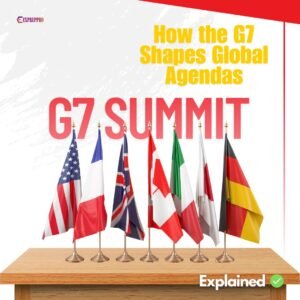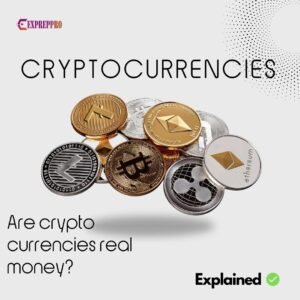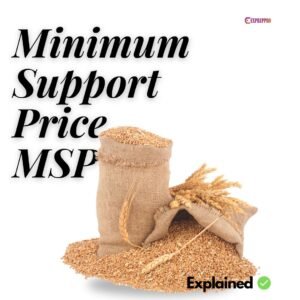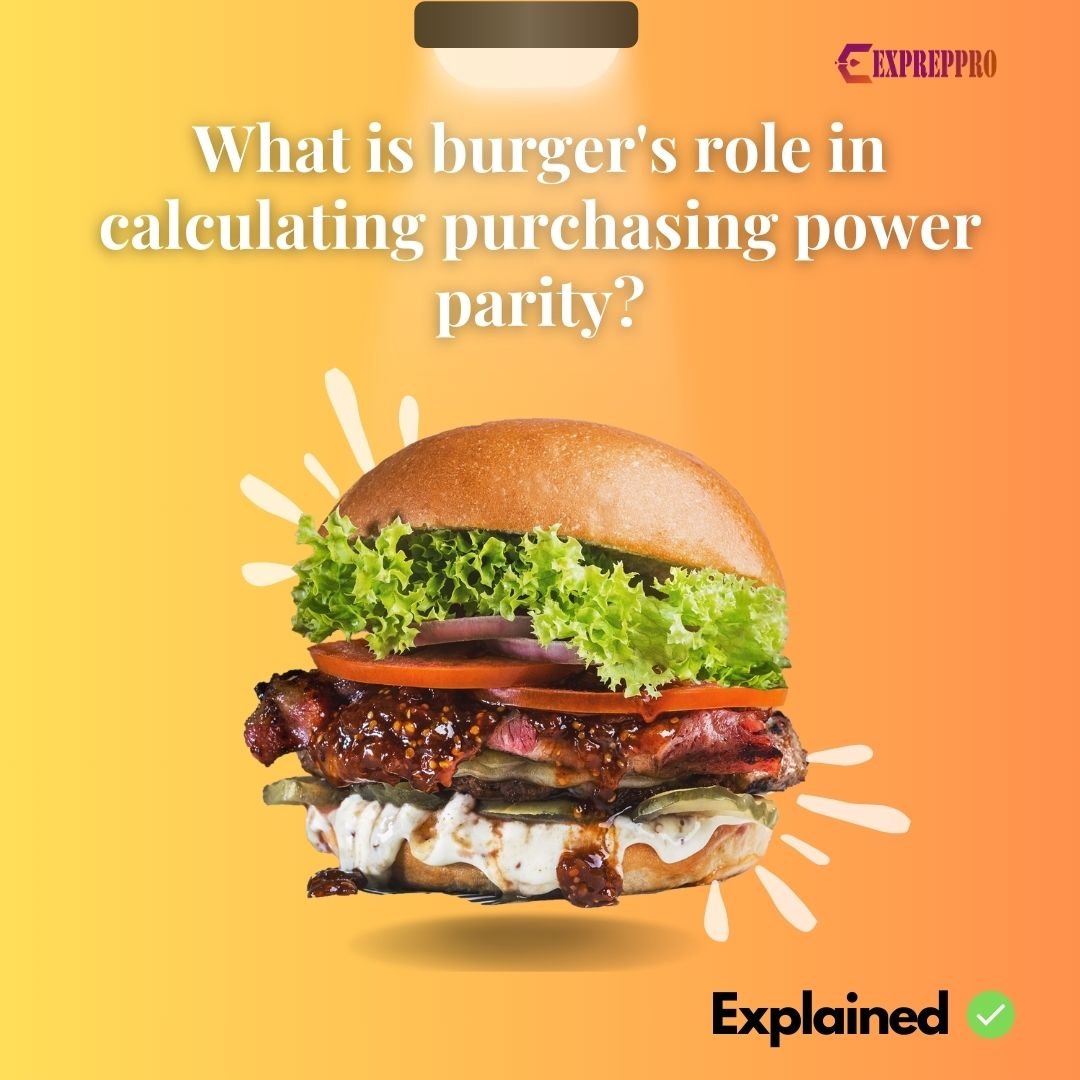
What is Burger’s role in calculating purchasing power parity? Do you believe us if we tell you there is a pivotal role? The Economist calculates and publishes a purchasing power parity index by utilizing the price of McDonald’s Big Mac burger. This index is known as BMI or “Big Mac Index.” Now it’s time to dive deep into the details of the Big Mac index.
PURCHASING POWER PARITY EXPLAINED
In simple terms, it is the equality of purchasing capacity, and based on the buying power of currencies in their home country, the exchange rate is determined.
The purchasing power parity is the number of units of a country’s currency required to buy the same goods and services in a comparable country.
The basket of items chosen for comparison should be a robust representative of the county’s price level. Let’s examine an example.
PURCHASING POWER PARITY EXAMPLE
Suppose with fifty Indian rupees, a basket of goods can be purchased in India, and the same basket of goods can be brought with 2 dollars in the U.S.A. In that case, the exchange rate is 50 Indian rupees = 2 U.S. dollars or one us dollar = 25 Indian rupees. Now, let’s explain in more simple terms.
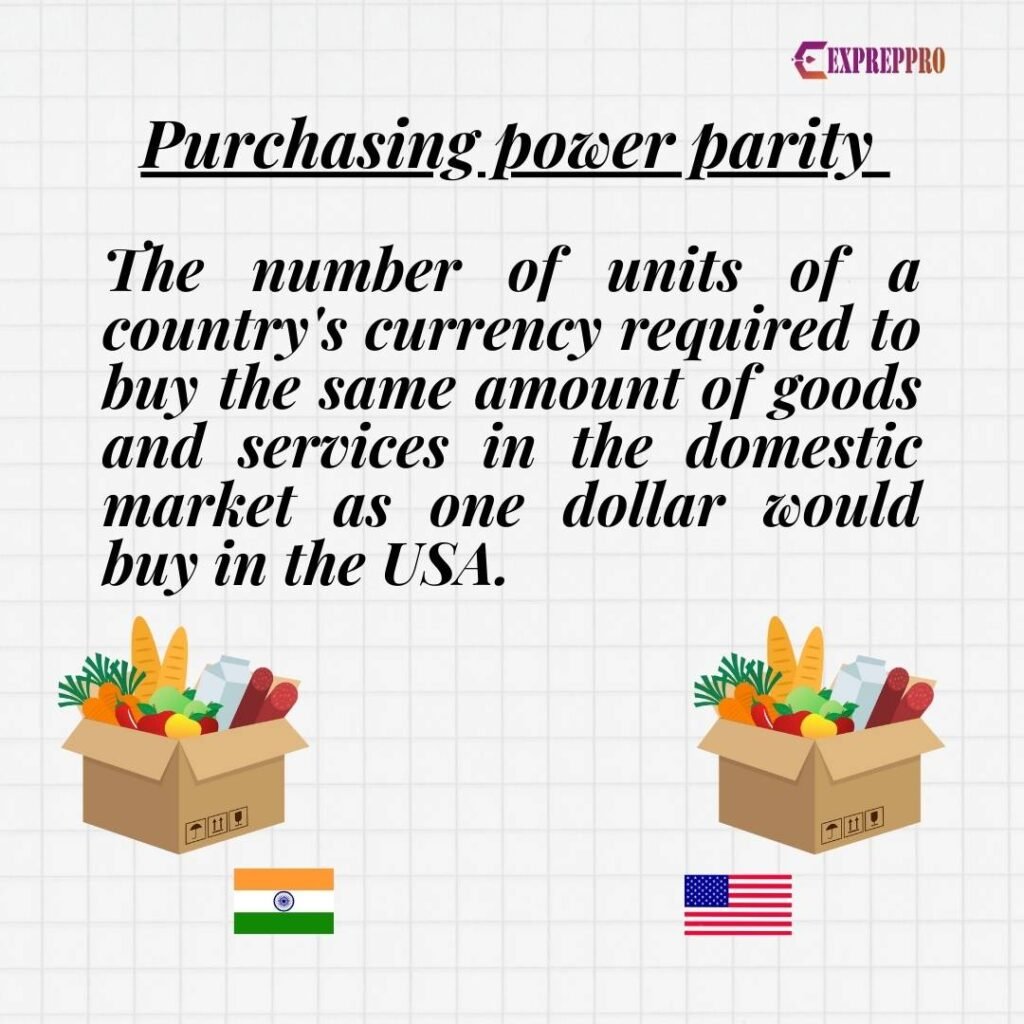
If a product costs US dollar 1.00 in the U.S.A and 1.00 INR in India, then the purchasing parity index can be expressed a 1:1 with the U.S.A as a base, and if the price is U.S.A is 1 dollar, and the price in India is 50 Indian rupees then the purchasing power parity is 1:50 or one us dollar buy the same in the U.S.A as 50 Indian rupees buy in India. Here, in purchasing power parity, we can derive a metric which is not dependent on exchange rates and all the variability factors that affect the exchange rates. The most important point is that purchasing power parity depends on the right conditions, real goods and renewable sources.
It can be extended from one product and two countries to any number of goods or a basket of goods if the conditions of the Law of One Price are satisfied.
The relative prices of goods in any one country are the same as in any other country, and the real exchange rate between any two countries. The purchasing power parity is the same for any collection of goods.
So now a question? Under what conditions can the same real goods prices be noticed in a number of countries? A non-comprehensive or partial answer can be obtained using the Heskscher-Ohlin trade theory.
THE MOST COMMON REASONS FOR INTERNATIONAL TRADE
According to Heskscher-Ohlin trade theory theory, the following are the most common reasons for international trade.
The first is a comparative advantage, which is required for trade. This comparative advantage can result from differences in tastes or factors of production like labour.
The second one is that if trade happens for comparative advantage, it will have very specific impacts on the prices of goods.
If a country has abundant labour and little capital, labour will be relatively cheap, and capital will be relatively expensive. So, in a country with abundant labour, a good product that employs labour extensively will be comparatively inexpensive. If the country is rich in capital, we can notice vice versa.
We have a number of theoretical and practical situations where the law of one price will cease to work. Transport costs and barriers against trade are examples of these situations.
Purchasing power calculations are complex when one or more of these situations are present. In this case, countries do not have a uniform price level. These countries display distinctly different price levels in different sectors of their economies.
Another problem that we have to face is differences in culture. People in different cultures will have different levels of income and different consumption patterns. For example, goods consumed in one country will not be available in another country.
While calculating, we also need to adjust for differences in the quality of goods and services.
BIG MAC INDEX EXPLAINED
In 1986, Pam Woodall, a senior economics writer at The Economist, considered comparing different currencies, like the U.S. dollar, Indian Rupee, and Swedish Krona, with a Big Mac burger.
What if a Big Mac burger costs the same in every country? This idea later became an amusing way to compare purchasing power parity.
Why was the Big Mac chosen for the Big Mac Index?
The answer is simple. Big Macs are identical everywhere they are sold. So, no adjustments need to be made, but the case with non-standard goods would be different.
If non-standard goods are used, then we need to make some adjustments. Moreover, McDonald’s is present globally.
As of 2021, McDonald’s has outlets in a hundred and eleven countries out of a hundred and ninety-five countries.
BIG MAC INDEX AND THEORY
In theory, if international trade is unfettered, then goods and services in all countries should eventually cost approximately the same amount. For example- The Big Mac costs 5 euros in Germany and five Singapore dollars in Singapore. Now, what is the logical exchange rate as per the previous statement? According to the purchasing power parity theory, one euro = one Singapore dollar. However, in reality, the exchange rate is different and will depend on many factors.
To provide a quick and amusing method of valuing exchange rates. The Economist started to use the Big Mac index based on Macdonald’s Big Mac.
To construct an index, the relative prices of homogenous hamburgers in countries are compared against the exchange rate between their two currencies. They went with Big Mac because they are more or less identical.
To the extent that the actual price of the burger in another country differs from the price in the U.S.A., the country’s currency is either overvalued or undervalued. If the same Big Mac costs two thirty rupees in India but 5 dollars 69 cents in the U.S.A, then the actual exchange rate is 83 point 73, and the Indian rupee is 51 point 7 per cent undervalued.
WHAT ARE THE LIMITATIONS OF THE BIG MAC INDEX?
Big Mac prices could be distorted by high taxes in countries like Denmark.
Inflated property costs in places like Hong Kong could exaggerate the degree of deviation from parity for these currencies. For an argument, we can say that the price of Big Mac does not include these costs. Then, they would be ideal measures since these costs would presumably apply to the economy as a whole.
The existence of productivity differences between countries also can create deviations.
Wages are cheaper in emerging markets, and wages are a big component of service costs. So, the Big Mac should be cheaper in emerging markets than in the U.S.A. Even when currencies are fully valued, the Big Mac index will show that emerging market currencies are undervalued.
In India, Mac doesn’t sell beef burgers, so The Economist uses the Maharaja burger as an equivalent.
WHY IS THE BIG MAC INDEX USEFUL?
Yes, the Big Macs index is helpful for forecasting exchange rates.
ALTERNATIVE TO BIG MAC INDEX
Other products, such as Starbucks latte, are used to construct similar indexes.
Starbucks’s later index uses Starbucks latte to compare the rate of exchange between currencies.
Billy’s index uses the price of Ikea’s Bily bookshelf in different countries to create an index. It is published by Bloomberg.
UBS wealth management research has developed a Big Mac index variant. This index calculates the number of hours a local worker must work to purchase a Big Mac. A decrease in the number of hours might indicate an increase in productivity and appreciation of domestic currency.
The no-frills index was proposed by Ong in 1997 and is based on the improved Big Mac index. Here, the concept of productivity bias is taken into account to create an improved index.
For more data please check BIG MAC INDEX .

